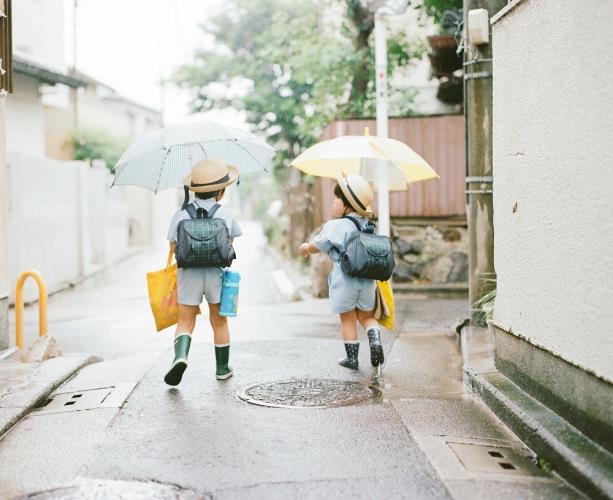Japan-based writer and traveller, specialising in design, lifestyle and travel journalism. Ron previously served as an editor of MING Magazine, ELLE Decoration and CREAM.

Photo courtesy of Hideaki Hamada
I went back to Hong Kong for a few days last year and was staying with my brother. After I put on a make-up in my bedroom in the morning, I saw my six-year-old niece waiting for me outside when I opened the door. “Aunt, your room smells good,” she said. I actually spread some white floral perfume in my room. My niece cocked her head and looked at me thoughtfully. With dimples on her cheeks, she smiled with her eyes. During day times, I could see that her eyes are dazzling. I very much wanted to photograph this but I know that when my camera is ready, it will no longer be the same. She would probably try hard to put a smile on her face.
I think that kids’ demeanour is the most natural and adorable when they are unaware of cameras.
In Japan, a number of photographers whose claim to fame is their forte of photographing kids. One of the most well-known is Kotori Kawashima, who has documented the everyday life of little Japanese girl Mirai. The girl’s face is striking through his lens, no matter when she gobbles down scramble eggs, gets a face full of ice-cream, or when she snuffles and blows her nose. The images also show her sweet smile with a flower in her mouth, and day-dreaming while hugging a pillar. Mirai’s everyday life is vividly seen throughout the images, and a number of readers would have thought that because Mirai was the photographer’s daughter so her expressions were captured naturally.
While images of Mirai are rich and whimsical, portraits of kids by Hideaki Hamada are mostly stony-faced. Hamada used to work as a web designer. After his first child Haru was born, he deliberately started taking up photography. Two years later his second child Mina was born and he started documenting the brothers, sometimes using his favourite Pentax 67II, sometimes using his smartphone.
Looking at Hamada’s images, I feel that I am not looking at a photo but a window that allows one to go into the world of tranquility behind the frame. In that world, the brothers turn somersaults, play guitar and sing in front of a fan, and look to the streets from the balcony. They do not notice that there are outsiders, just like they do not really pay attention to their father when he photographs them. Like us, Hamada is a bystander. He quietly observes his children. He never intervenes or participates in what they are doing. He said: “Most of my works are family photos. When I photograph my family especially my kids, I try to maintain an objective perspective. I never stay too close or too far away from them, as if I am watching them from behind. I think what I am doing is more like merely observing them. It’s within such distance I carefully photograph the intangible yet visible ambiance surrounding the brothers. What I hope is a photo can give room to people to imagine what has happened before and what will happen after the photo is taken.” Hamada has repeatedly explained his photography techniques in different interviews, and the reason why he takes pictures in such a way is because he would like to observe how his kids grow up. This thought is so powerful that he is able to capture candid moments of his kids through his lens.
He said: “Most people naturally want to capture something momentous through lens. But kids do not smile or cry very often. Most of the time they are inexpressive. I want to document what my kids actually do in day-to-day life. Through this the occasionally appeared timeless moments can be captured and turned to an image we will never get tired of looking at.”
How can an image show the cuteness of the kids? When we adults tell kids to pose for the photographs we often ask them to smile or to assume certain posture. Those images are only what we thought a “cute kid” should be, not what they actually are. I believe that if Kawashima, like Hamada, only uses smartphone to take photos, he is also able to produce excellent, heart-warming images of kids. It’s because both of them are willing to spend time to observe children. They witness their day-to-day world and determine to protect it.
Hamada said that he will keep photographing his kids until Haru and Mina ask him to stop. He hopes that these photos would become a gift for his kids in the future. After all, they are the most important readers of these images.